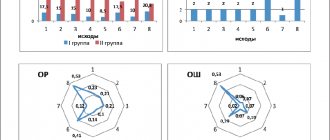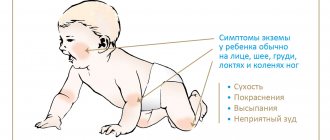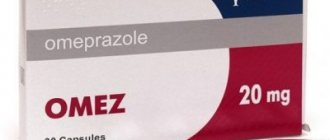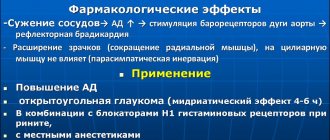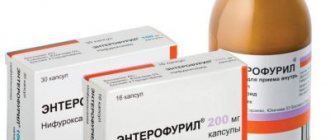Pharmacological properties of the drug Aminoven
The non-essential and essential L-amino acids included in the drug Aminoven are physiological components. After parenteral administration, amino acids are included in the general pool of free amino acids in the body and participate in all metabolic processes, in particular they are used for protein synthesis. Pharmacokinetics. The pharmacokinetic characteristics of amino acids for parenteral administration are similar to those supplied with food. After parenteral administration, amino acids enter the systemic circulation and are redistributed in the interstitial fluid and intercellular space of organs and tissues. The concentration of free amino acids in the blood plasma and cytoplasm of cells is regulated by endogenous mechanisms within narrow limits depending on the age, diet and general condition of the patient. Aminoven, when administered slowly, does not upset the balance of amino acids. Only a small portion of amino acids is eliminated by the kidneys.
brief information
Aminoven-Infant is a solution of amino acids for parenteral nutrition of newborns (premature and full-term) and infants and older children. The drug contains 10% amino acids without electrolytes and carbohydrates.
The composition of Aminoven-Infanta is designed to meet the special amino acid needs of children; These needs are determined primarily by the following:
- High requirement for essential amino acids to ensure normal growth and development of organs
- Metabolic immaturity, which limits the synthesis and breakdown of individual amino acids
- Weak ability to compensate for insufficient supply of amino acids from food.
Aminophen-Infant is a well-balanced mixture of amino acids containing:
- 52% essential amino acids
- taurine is an essential component of newborn nutrition
- cystenium and tyrosine, which are synthesized in insufficient quantities
- little methionine and phenylalanine due to the low rate of their breakdown.
Extensive experience in the clinical use of Aminoven-Infant has shown good tolerability and safety of the drug and its high nutritional value for supporting the growth and development of the child. Aminoven-Infant is used for:
- Total parenteral nutrition (TPN) in combination with glucose, fats, vitamins and microelements
- Maintenance intravenous nutrition until full oral or enteral nutrition is restored.
Use of the drug Aminoven
IV: Aminoven 5% and 10% solution is injected into the central or peripheral vein (depending on the final osmolarity of the solution when administered together with other solutions). Aminoven 15% should be administered only into the central veins. The duration of the infusion depends on the general condition of the patient, based on the body's daily need for amino acids. Aminoven 5%. Average daily dose: 16–20 ml of Aminoven 5% solution per 1 kg of body weight per day (equivalent to 0.8–1.0 g of amino acids per 1 kg of body weight or 1120–1400 ml of Aminoven for a patient weighing 70 kg ). Maximum daily dose: 20 ml of Aminoven 5% solution per 1 kg of body weight per day (equivalent to 1.0 g of amino acids per 1 kg of body weight or 70 g of amino acids for a patient weighing 70 kg). Maximum infusion rate: 2.0 ml Aminoven 5% solution per 1 kg of body weight per hour (equivalent to 0.1 g of amino acids per 1 kg of body weight per hour). Aminoven 10%. Average daily dose: 10–20 ml of Aminoven 10% solution per 1 kg of body weight per day (equivalent to 1.0–2.0 g of amino acids per 1 kg of body weight or 700–1400 ml of Aminoven for a patient weighing 70 kg ). Maximum daily dose: 20 ml of Aminoven 10% solution per 1 kg of body weight per day (equivalent to 2.0 g of amino acids per 1 kg of body weight or 1400 ml of Aminoven for a patient weighing 70 kg (equivalent to 140 g of amino acids)). Maximum infusion rate: 1.0 ml of Aminoven solution 10% per 1 kg of body weight per hour (equivalent to 0.1 g of amino acids per 1 kg of body weight per hour). Aminoven 15%. Average daily dose: 6.7–13.3 ml of Aminoven solution 15% per 1 kg of body weight per day (equivalent to 1.0–2.0 g of amino acids per 1 kg of body weight or 470–930 ml of Aminoven for a patient with body weight 70 kg). Maximum daily dose: 13.3 ml of Aminoven solution 15% per 1 kg of body weight per day (equivalent to 2.0 g of amino acids per 1 kg of body weight or 140 g of amino acids for a patient weighing 70 kg). Maximum infusion rate: 0.67 ml of Aminoven solution 15% per 1 kg of body weight per hour (equivalent to 0.1 g of amino acids per 1 kg of body weight per hour).
Requirement for parenterally administered amino acids
Indications for TPP
TPN is a method of complete nutritional support for patients for the purpose of preventing and treating exhaustion (during operations (32), in critical condition (7), after a bone marrow transplant (25), as well as long-term patients with short bowel syndrome). TPN allows you to maintain the nutritional status of patients and makes it possible to restore impaired intestinal function (in case of small intestinal enteropathy (34), damage due to chemotherapy or radiotherapy for tumor diseases (26)). TPN is the primary treatment for treatment-resistant Crohn's disease as well as gastrointestinal fistulas. In addition, PN is carried out in addition to enteral nutrition in cases where the latter is not enough to fully meet the body's nutritional needs.
Immediate and sufficient supply of amino acids
In well-nourished adult patients who have been unable to eat orally for several days, parenteral fluid, electrolytes, and glucose are often sufficient to maintain the nutritional status necessary for recovery. But for newborns and infants in such situations, parenteral nutrition should be started as early as possible, and it should include amino acids from the very beginning. Very low birth weight infants require TPN to prevent hypoglycemia and to provide energy and amino acids needed for growth. The goal of nutrition in preterm infants is to maintain a growth rate consistent with that of the fetus during normal intrauterine development (5). Slow gain in body weight is an indicator of malnutrition. In turn, poor nutrition can negatively impact mental development. There is evidence of the adverse effects of undernutrition on neurodevelopment (11,18). Poor growth in preterm infants is thought to be primarily due to inadequate protein intake, with low energy intake likely playing a minor role (2).
TABLE 2. METABOLIC RESPONSE OF NEWBORNS TO STRESS INDUCED BY SURGICAL OPERATION (30,32)
| Metabolic rate and oxygen consumption: | ↓ compared to adults; (↔) compared to healthy children of the same age |
| Protein metabolism: | negative nitrogen balance for 3-4 days after surgery; ↑ protein loss in newborns compared to older children; ↑ breakdown of muscle proteins, impaired nitrogen absorption, but increases with increasing nitrogen intake |
| Carbohydrate metabolism: | ↑ glucose levels, less stable than in adults, more likely due to ↑ breakdown of glycogen than due to glucose synthesis (vice versa in adults) |
| Metabolism of fats: | ↑ breakdown of fats and formation of ketones →↑ content of ketone bodies; ↑ glycerol and free fatty acid levels. |
Therefore, maintaining the required amount of body proteins is the main goal of nutrition for young children. An immediate and sufficient supply of amino acids is key, especially for malnourished children and children who are critically ill or in a state of metabolic stress caused by surgery or injury (Table 3).
It is clear that the use of AK in the postoperative period in newborns has a beneficial effect. With an increase in the supply of amino acids, the accumulation of nitrogen in the body increases (12.38). It has been suggested that even in the most severely stressed children, positive nitrogen balance can be achieved with adequate nitrogen intake. This amount may be twice the amino acid intake required to maintain nitrogen balance under normal conditions due to increased acute phase protein synthesis under stress.14 In low birth weight infants, infusion of glucose alone immediately after birth results in a rapid decrease in blood amino acid levels. (22). PN, which includes amino acids, causes a rapid increase in the synthesis of body proteins and, possibly, a weakening of proteolysis in premature infants (4).
Special mixture for children
Do children need a special amino acid blend? In newborns, infants and older children receiving standard amino acid mixtures for adults, imbalances of various amino acids were often observed. In particular, increased concentrations of methionine, phenylalanine, or glycine and deficiencies of taurine, tyrosine, and cysteine are commonly observed (8,22). These data demonstrate differences between children and adults associated with underdeveloped amino acid metabolism and the special needs of children (see Figure 2). They also serve as the basis for recommending the use of specially adapted amino acid mixtures in children.
Special instructions for the use of the drug Aminoven
It is necessary to monitor the electrolyte balance of blood plasma, water balance and renal function. For hypokalemia and/or hyponatremia, adequate amounts of potassium and/or sodium must be administered simultaneously. The introduction of any amino acid solution can provoke acute folate deficiency, so patients need daily administration of folic acid. Large volumes of fluid should be administered with caution to patients with heart failure. Infusions into peripheral veins can cause irritation of the vessel walls and thrombophlebitis. The administration of fat emulsion should be carried out simultaneously with the infusion of Aminoven to reduce the risk of developing phlebitis. The choice of location for catheter installation (central or peripheral vein) depends on the final osmolarity of the solution: when infused into a peripheral vein, the upper limit of osmolarity is 800–900 mOsmol/L. It is necessary to take into account the age, general condition of the patient and the condition of his peripheral veins. When catheterizing veins, it is necessary to strictly adhere to the rules of asepsis. When using the drug, the following must be observed:
- Use the drug immediately after opening the bottle;
- the drug is intended for single use only;
- do not use a drug that has expired;
- use the drug only from an undamaged container containing a transparent solution without impurities;
- the unused remainder of the drug is disposed of.
Use during pregnancy or breastfeeding. No special studies have been conducted on the safety of Aminoven during pregnancy and lactation. However, clinical studies that were conducted on similar solutions of amino acids intended for parenteral administration showed that there is no data on the risk of using the drug during pregnancy and lactation. Before using Aminoven for pregnant and breastfeeding women, the doctor should assess the risk/benefit ratio. Children. Not applicable Ability to influence reaction speed when driving vehicles or operating other mechanisms. Does not affect.
Introduction
Parenteral nutrition (PN) makes it possible to provide the patient with sufficient nutrients in cases where this cannot be done orally or enterally (or nutrition through these routes is insufficient). Intravenously administered nutrients - amino acids as components of proteins, fats, carbohydrates, electrolytes, vitamins and microelements - can partially or completely replace regular food. The importance of a constant supply of nutrients depends on the age of the patient: the younger he is, the more important is a constant supply of nutrients that corresponds quantitatively and qualitatively to the body's needs for development and growth and for the normal functioning of organs.
Various clinical conditions and diseases may preclude adequate oral or enteral nutrition in neonates, infants, and older children and thus provide indications for TPN or parenteral nutrition in addition to enteral nutrition. TPN is a life-saving treatment when bowel function is impossible, for example in children with congenital bowel disorders, extremely short bowels, or severe enteropathy. TPN may be necessary to prevent acute starvation, such as during long surgery or in critical illness. The main indication for parenteral replenishment of insufficient enteral nutrition is underdevelopment of the functions of the gastrointestinal tract (mainly in premature newborns). But for many diseases, intravenous nutrition is essential for the maintenance and development of organs and body functions and even for the survival of the child.
For the nutrition of a young growing organism, the protein component of food is of particular importance. The amino acid composition of a protein (or amino acid solution) plays a decisive role in the ability of the protein (solution) to deliver to the body all the necessary nitrogen-containing building components and metabolic substrates in sufficient quantities and in the correct proportion.
Aminoven-Infant is a solution of amino acids specifically designed to meet the needs of tiny patients, to maintain body functions, ensure metabolic homeostasis, growth and development.
Aminoven drug overdose, symptoms and treatment
Too high an infusion rate or an overdose of the drug may cause nausea, vomiting, chills, and loss of amino acids through the kidneys. Administration of the drug should be stopped immediately and resumed later at a reduced dosage. Too high an infusion rate may cause overhydration and electrolyte imbalance. There is no specific antidote. Emergency medical measures should be of a general supportive nature with special attention to the function of the respiratory and cardiovascular systems. Strict monitoring of the indicators of the functions of the respiratory and cardiovascular systems, monitoring of biochemical blood parameters is necessary.



